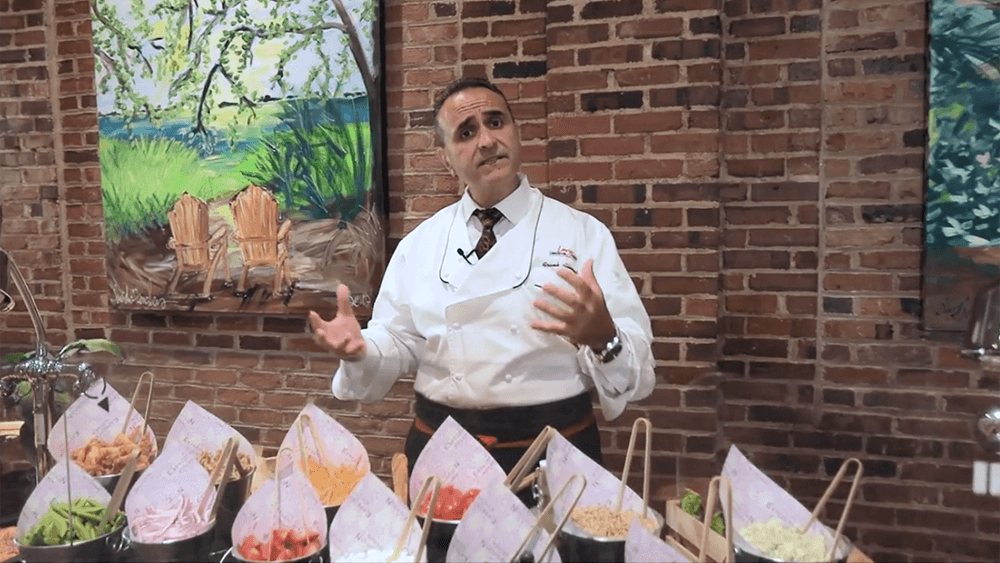
Chef Frank Abbinanti, vice president of culinary at Levy Convention Center Division, explains Levy’s Chef’s Table concept for safe dining.
FIND THE SESSION: Reimagining F&B for the Next Generation of Events
“F&B just naturally brings people together,” says Matthew Moss, regional director of operations for Levy Convention Centers, but it’s also true that if food-and-beverage service is anything short of exemplary, planners are sure to hear complaints. F&B is one of the meeting elements most affected by COVID-19-related restrictions on large gatherings.

Matthew Moss and Dede Gish-Panjada
Event strategist Dede Gish-Panjada, chief consultant at the Chicago-based association management firm Bostrom, will join Moss, along with Matt Roach, regional chef for Levy Convention Centers and a graduate of the Pennsylvania Culinary Institute, to share best practices and answer Convening Leaders attendees’ questions about event F&B in the time of COVID-19 on Thursday, Jan. 14 at 4:30 a.m. SGT (Singapore), 9:30 p.m. CET (Berlin), and 3:30 p.m. EST (New York).
Working in 23 convention centers throughout the United States, Levy employees have to contend with a myriad of local rules and regulations. Moss, who has worked in Louisville, Kentucky, since 2017, says that the key to success in the face of ever-changing circumstances is to embrace flexibility: “It’s essential,” he said, “to be able to reimagine the experience for our guests’ and team members’ safety.” Moss identifies four key aspects of meetings F&B that planners should pay special attention to in 2021: buffets, large breaks, plated meals, and concessions.
- Buffets Need Buffers: All F&B service areas should have directional signage to help attendees and staff maintain social distancing, Moss says, but that’s just the beginning. At the Kentucky International Convention Center in Louisville, traditional buffets have been reinvented as chef’s tables where attendees can choose from a few premade options instead of assembling their own plates. One catering staff member is behind each station to answer questions and handle any special requests.
- Rethink Large Breaks: It’s important to avoid a crowd around the snack tables, so planners should stagger break times and use signage to reinforce safety protocols. Chef Matt Roach also recommends replacing snacks laid out on platters with individually packaged grab ‘n go items. Catering staff can even group several items together in small cardboard boxes so that attendees won’t have to circulate to try one of everything.
- Safer Seated Meals: Transparency is key for seated meals: Planners need to speak up about what their group needs to feel safe, Moss said. It’s important to remember that additional labor is now needed to serve seated meals and budget for that ahead of time. Roach recommends paper covers for all glassware and serving dressings and sauces in individual vessels rather than family-style.
- Opt for Contactless Concessions: Convention centers have followed the lead of the restaurant industry and moved toward digital menus for cafés and other concessions. The Kentucky International Convention Center will introduce a food concierge to help guide attendees on safety, advise them on what concessions will be offered throughout the course of an event, and take pre-orders, Moss said.
Kate Mulcrone is a New York City–based freelance writer.
